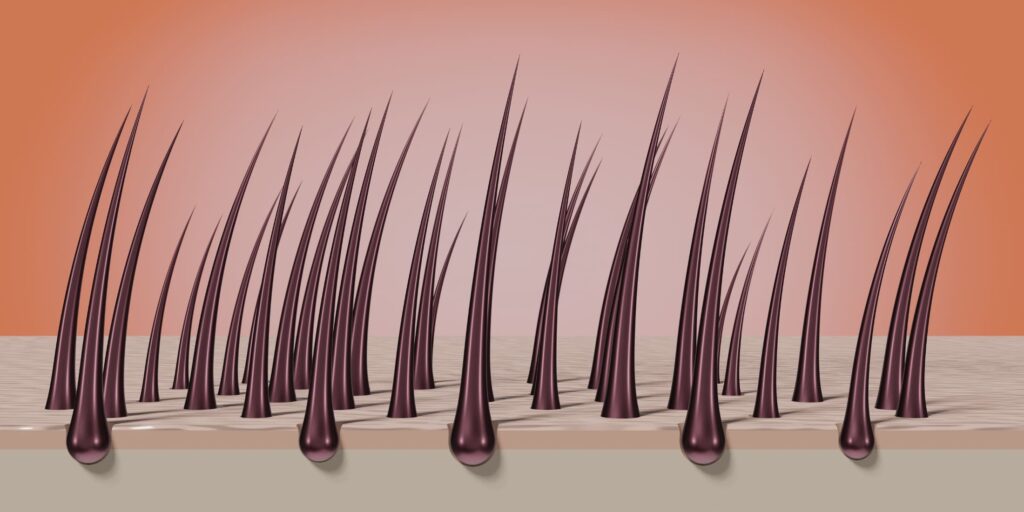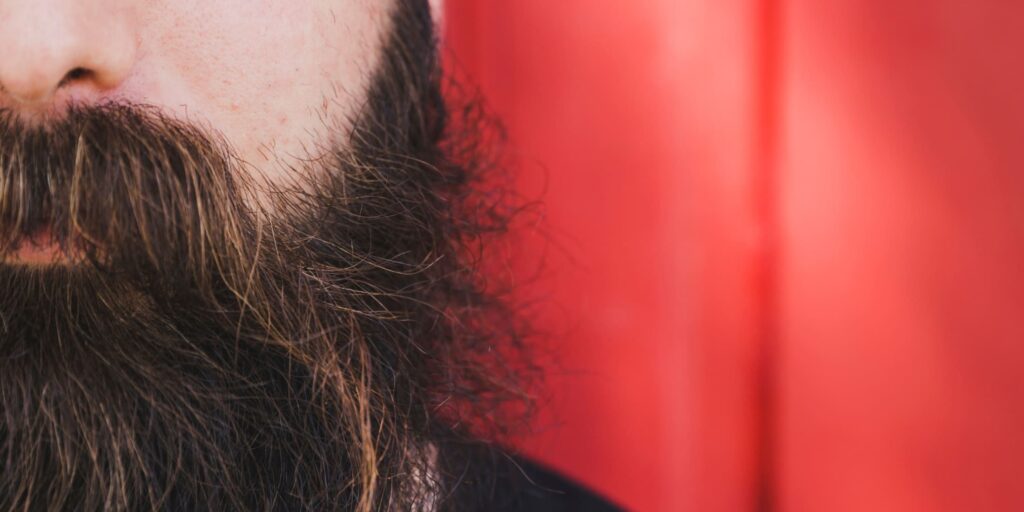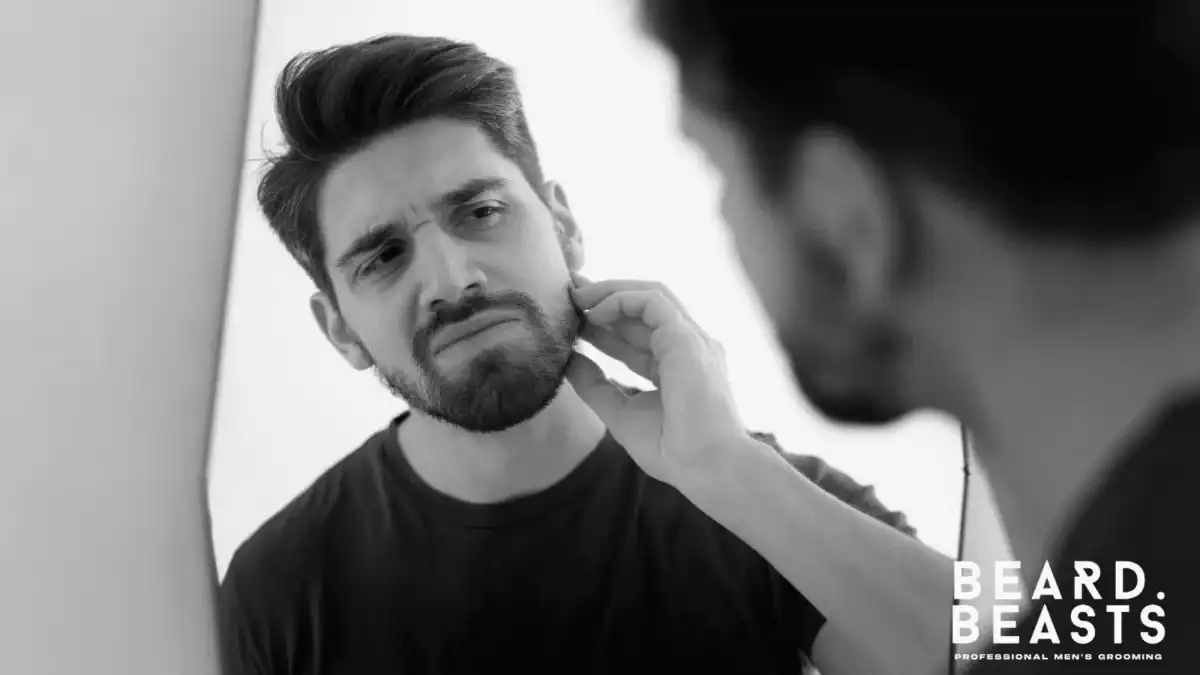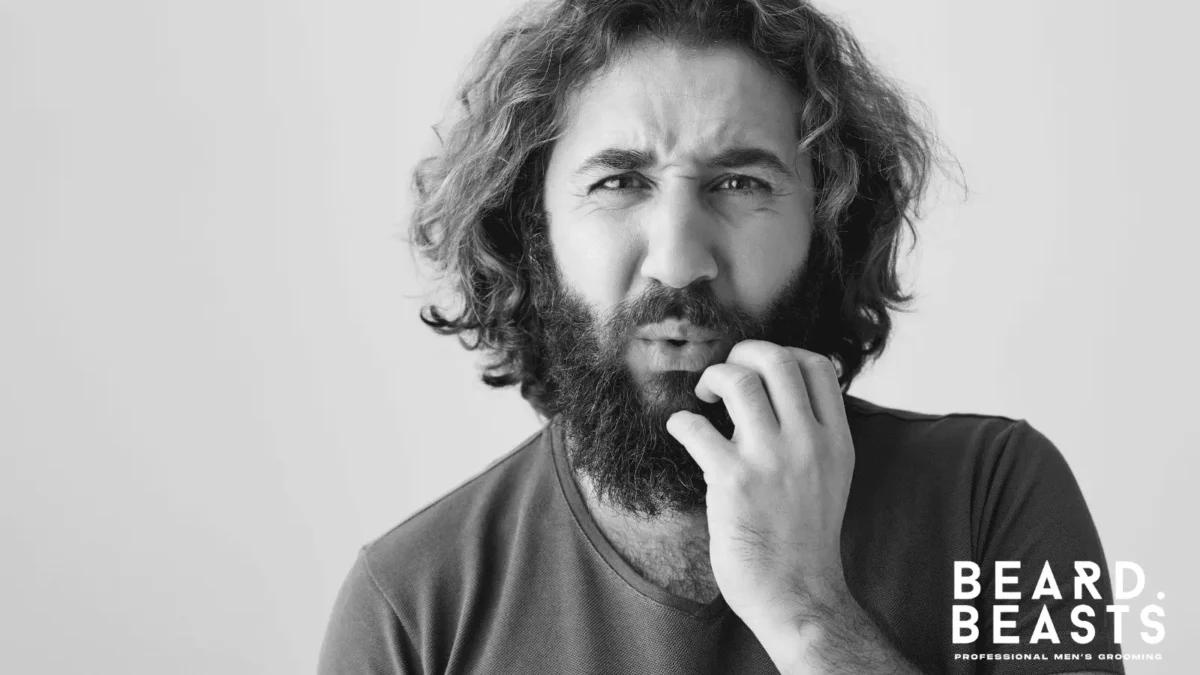When it comes to beard hair vs. head hair, there are intriguing differences that set each apart. Understanding these distinctions—from structure and growth patterns to genetic and hormonal influences—can help you care for both effectively.
In this article, we’ll explore anatomy, grooming tips, and common myths, offering valuable insights to keep your beard and head hair healthy and stylish. Let’s dive into what makes beard hair unique compared to head hair!
Anatomy and Structure
Understanding the anatomy and structure of beard hair vs. head hair reveals why these hairs are different. Let’s explore!

Hair Follicles
Differences in Structure
- Shape and Size: Beard hair follicles are larger and more oval, while head hair follicles are rounder and smaller.
- Growth Angle: Beard hair grows at a steeper angle, making it curlier or wirier compared to head hair.
Role of Sebaceous Glands
- Beard Hair: More active sebaceous glands produce more oil, giving beard hair its characteristic shine and sometimes greasiness.
- Head Hair: Less active sebaceous glands make head hair less oily but more prone to dryness and dandruff.
Hair Growth Cycle
Both beard and head hair follow the same growth cycle but differ in timing and growth rate.
Anagen Phase (Growth Phase)
- Beard Hair: Lasts a few months to a couple of years, limiting length.
- Head Hair: Can last up to 7 years, allowing for much longer growth.
Catagen Phase (Transitional Phase)
- Both: Lasts a few weeks, during which the hair follicle shrinks.
Telogen Phase (Resting Phase)
- Beard Hair: Lasts several months, with hair remaining attached until it falls out.
- Head Hair: Also lasts a few months, with daily shedding but a longer growth phase maintaining fullness.
Growth Rate Differences
- Beard Hair: Grows about 0.27 mm per day.
- Head Hair: Grows about 0.35 mm per day, allowing for greater length.
By understanding these differences in the anatomy and structure of beard hair vs head hair, you can tailor your grooming and care routines to best suit each type.
Genetic and Hormonal Influences
Let’s explore how genetics and hormones shape the differences between beard hair vs head hair.
Genetics
How Genetics Influence Hair Characteristics
Genetics play a significant role in determining the texture, color, and growth patterns of both beard and head hair:
- Hair Texture: Inherited genes determine whether your hair is straight, wavy, or curly.
- Hair Color: The type and amount of melanin produced by your hair follicles are genetically programmed.
- Growth Patterns: Genetics influence the thickness and density of your hair on both your head and face.
Common Genetic Traits Affecting Each Type
- Beard Hair: Some men have genes for thicker, coarser beard hair, while others may have sparse or patchy beards.
- Head Hair: Genetics can cause varying hair density, thickness, and patterns of baldness, such as male pattern baldness.
Hormones
Impact of Androgens on Beard Hair
Androgens, especially testosterone and dihydrotestosterone (DHT), have a significant impact on beard hair:
- Testosterone: High levels can stimulate thicker and more robust beard growth.
- DHT: Promotes hair growth and affects texture in the beard area; higher DHT often means a fuller beard.
Hormonal Influences on Head Hair
Hormones also affect head hair differently:
- Testosterone and DHT: While promoting beard growth, high levels of DHT can lead to hair thinning and male pattern baldness on the scalp.
- Sensitivity Differences: Scalp hair follicles are more sensitive to DHT than beard follicles, leading to potential thinning or baldness on the head even if the beard remains full.
Understanding the genetic and hormonal influences on beard hair vs. head hair helps explain why your hair grows the way it does. This knowledge can guide you in tailoring your grooming routine to your unique hair needs.
Texture and Appearance
Exploring the texture and appearance of beard hair vs. head hair reveals fascinating differences. Let’s dive in!

Thickness and Density
Comparing Thickness and Density
- Beard Hair: Generally thicker and coarser, giving beards a rugged look.
- Head Hair: Finer and less coarse, resulting in a softer appearance.
Influencing Factors
- Hormones: Androgens like testosterone make beard hair thicker.
- Genetics: Determine the density and thickness of both beard and head hair.
Color and Graying
Color Consistency and Graying Patterns
- Beard Hair: Often shows more color variation, with multiple shades and an early onset of gray, creating a salt-and-pepper look.
- Head Hair: Maintains a consistent color until graying begins, usually at the temples.
Melanin Levels
- Beard Hair: Uneven melanin levels lead to color variation and early graying.
- Head Hair: More even melanin distribution keeps the color consistent until it starts to gray.
Understanding the texture and appearance differences in beard hair vs. head hair helps you better care for and appreciate your unique hair characteristics, whether on your face or head!
Care and Maintenance
Taking care of beard hair vs. head hair requires different approaches. Here are some essential tips!
Grooming Practices
Maintaining Healthy Beard Hair
- Regular Washing: Clean with a gentle beard wash 2-3 times a week.
- Conditioning: Apply beard oil or conditioner to keep it soft.
- Trimming: Trim regularly to maintain shape and prevent beard split ends.
- Combing: Use a beard comb to detangle and distribute oils.
Effective Head Hair Care
- Shampooing: Wash 2-4 times a week with a suitable hair shampoo.
- Conditioning: Use hair conditioner to keep hair hydrated.
- Regular Cuts: Trim every 6-8 weeks to remove split ends.
- Heat Protection: Apply a heat protectant before using styling tools.
Common Issues
Beard Dandruff vs. Scalp Dandruff
- Beard Dandruff: Use anti-dandruff shampoo and moisturize with beard oil.
- Scalp Dandruff: Use anti-dandruff shampoo regularly.
Ingrown Hairs vs. Scalp Issues
- Ingrown Hairs: Exfoliate regularly and use a gentle beard scrub.
- Scalp Issues: Use medicated shampoos and avoid harsh styling products.
By understanding the unique care needs and common issues of beard hair vs. head hair, you can keep both looking healthy and stylish.
Common Myths and Misconceptions
When it comes to beard hair vs. head hair, there are plenty of myths and misconceptions. Let’s clear up some of the most common ones!
Myth-Busting
Myth 1: Shaving Makes Hair Grow Back Thicker
- Reality: Shaving does not affect the thickness or rate of hair growth. It might feel coarser as it grows back because the hair is cut straight across, giving it a blunt end.
Myth 2: Beard Hair is Stronger than Head Hair
- Reality: While beard hair is typically thicker and coarser, it’s not necessarily stronger. The perception of strength comes from its texture and density.
Myth 3: You Can’t Control Beard Dandruff
- Reality: Beard dandruff can be managed with proper care. Regular washing, exfoliating, and using beard oil can keep dandruff at bay.
Myth 4: Hair Products for Head Hair Work the Same for Beards
- Reality: Products designed for head hair can be too harsh for beards. Beard-specific products are formulated to address the unique needs of facial hair and the skin underneath.
Myth 5: All Hair Grays at the Same Rate
- Reality: Beard hair often starts graying earlier and more unevenly than head hair due to different melanin levels and genetic factors.
Myth 6: Beards Don’t Need Moisturizing
- Reality: Beards can become dry and brittle without proper moisture. Using beard oil or balm helps keep the hair soft and the skin underneath healthy.
By dispelling these common myths about beard hair vs. head hair, you can take better care of your hair, understanding what’s fact and what’s fiction. Embrace the truth and enjoy healthy, well-groomed hair!
Frequently Asked Questions
Understanding the differences between beard hair and head hair can be a bit confusing. Here are answers to some common questions!
Is Beard Hair the Same as Hair on Your Head?
- No, they’re different! Beard hair is generally thicker, coarser, and often curlier than head hair. This is due to the larger and more oval-shaped follicles in beard hair. Head hair, on the other hand, is typically finer and softer.
Does Beard Hair Fall Out Like Head Hair?
- Yes, but differently. Beard hair follows a similar growth cycle (anagen, catagen, and telogen phases) to head hair, so it does fall out. However, because the growth phases are shorter, beard hair often sheds more frequently and grows back faster.
Why Is Beard Hair Curlier Than Head Hair?
- It’s all about the follicles! Beard hair follicles are more oval-shaped and grow at a steeper angle, which causes the hair to curl. Additionally, the coarser texture of beard hair makes it appear curlier compared to the finer texture of head hair.
Understanding these aspects of beard hair vs. head hair can help you better care for and appreciate the unique qualities of each. If you have more questions, feel free to ask or share your experiences!
Conclusion
Understanding the differences between beard hair vs. head hair helps you appreciate the unique characteristics of each. From their anatomy and structure to genetics and hormonal influences, and even the way we care for them, these two types of hair are distinct in fascinating ways.
Key Takeaways:
- Anatomy and Structure: Beard hair is thicker and grows at a steeper angle, making it curlier and coarser than head hair.
- Genetics and Hormones: Genetics dictate hair texture and growth patterns, while hormones like testosterone and DHT have different effects on beard and head hair.
- Texture and Appearance: Beard hair often has more color variation and starts graying earlier than head hair.
- Care and Maintenance: Proper grooming practices and addressing common issues like dandruff and ingrown hairs are essential for both beard and head hair.
By embracing these insights, you can develop a more tailored and effective grooming routine, ensuring both your beard and head hair stay healthy and look great. Whether you’re dealing with the rugged texture of your beard or the finer strands on your head, each requires its unique approach for optimal care.





